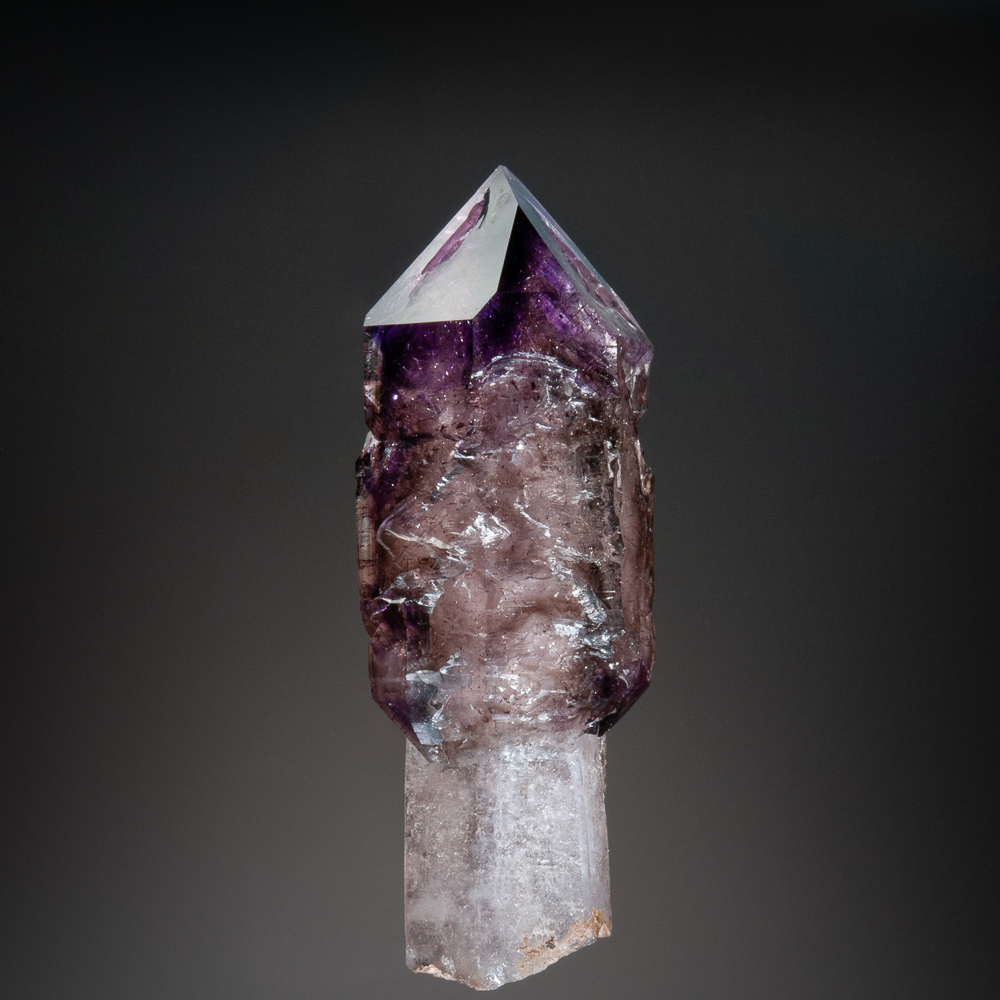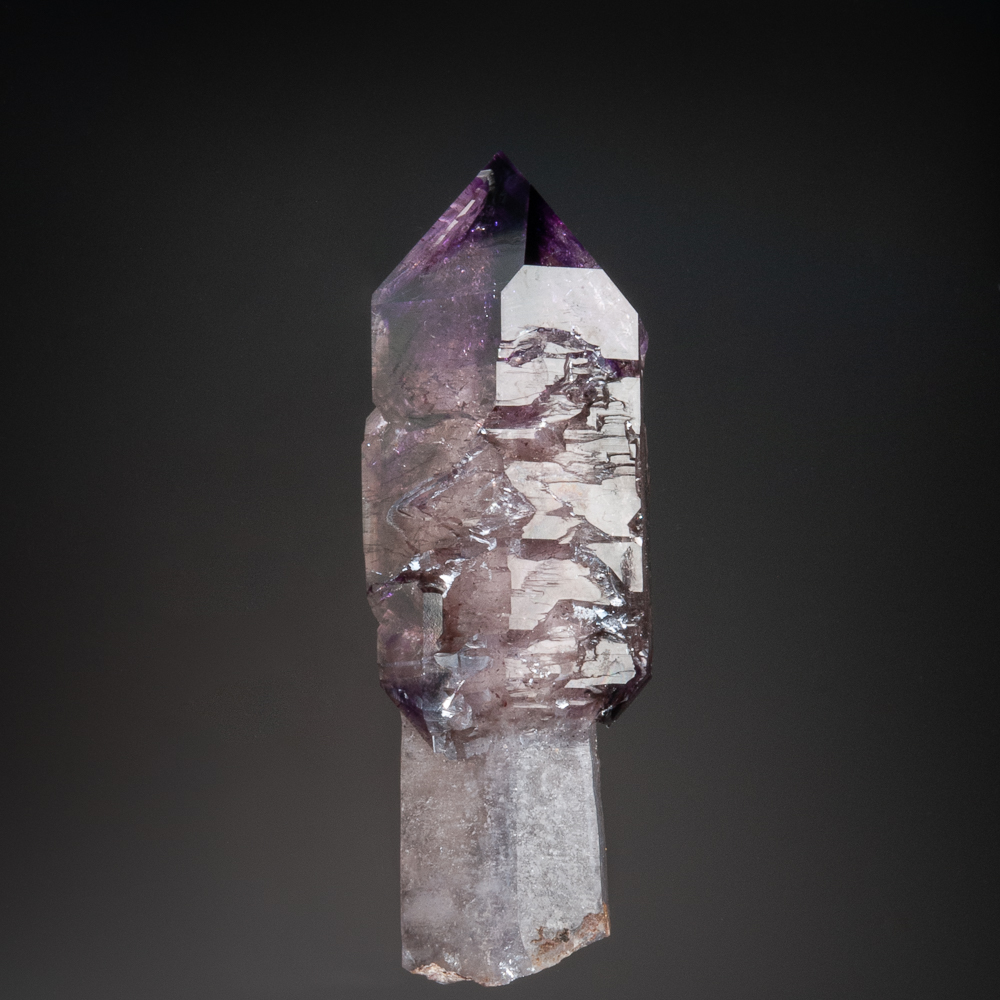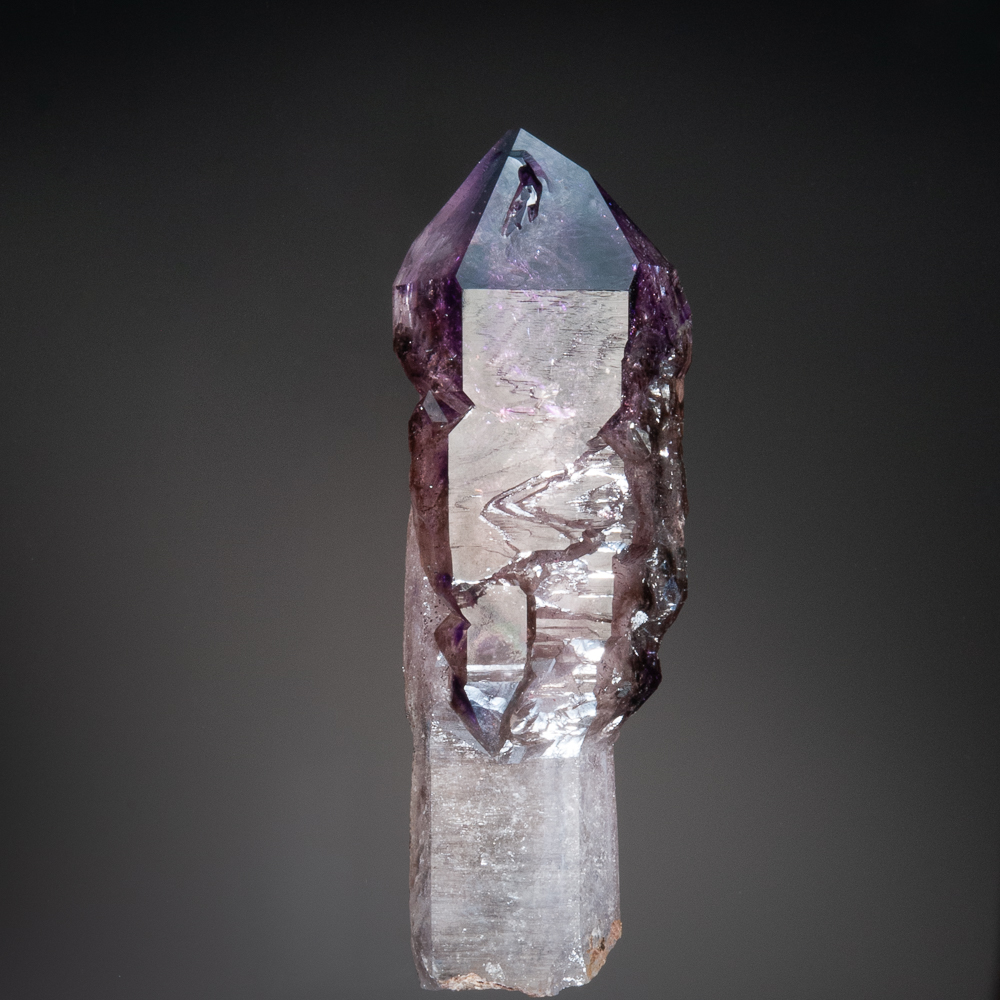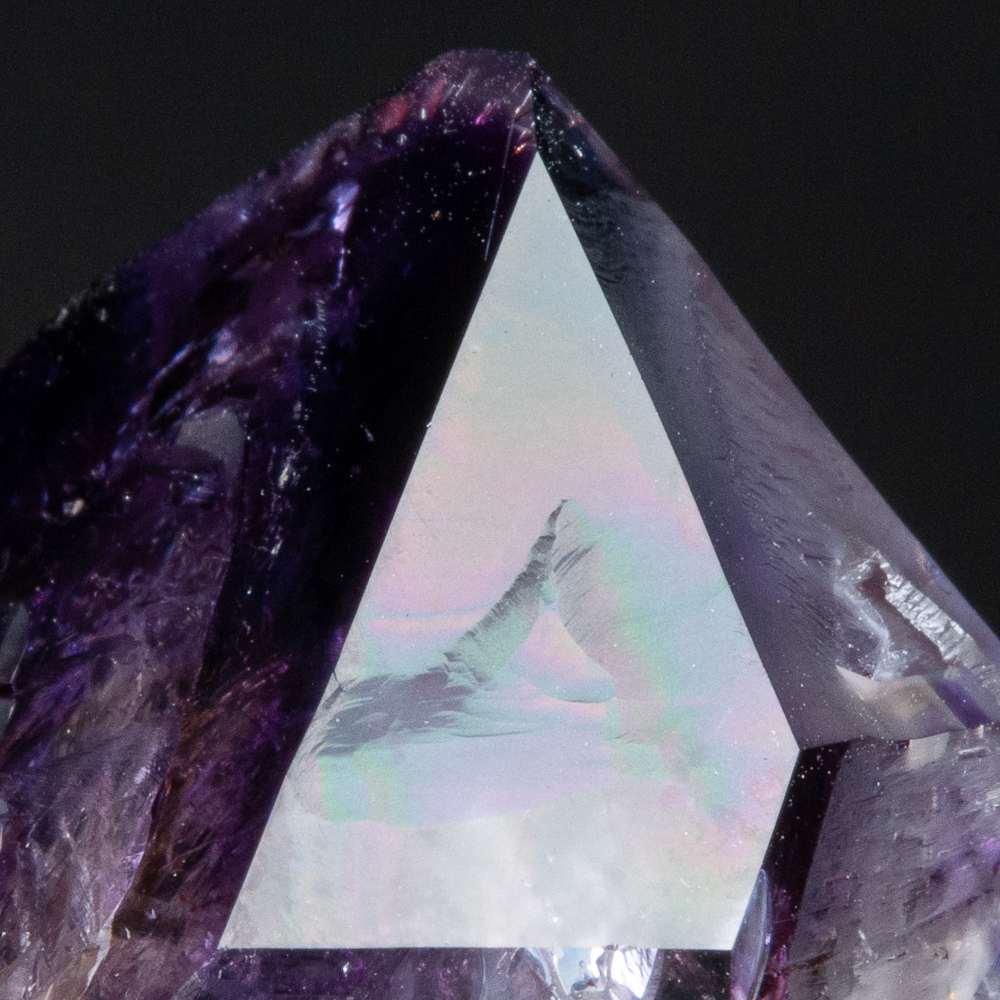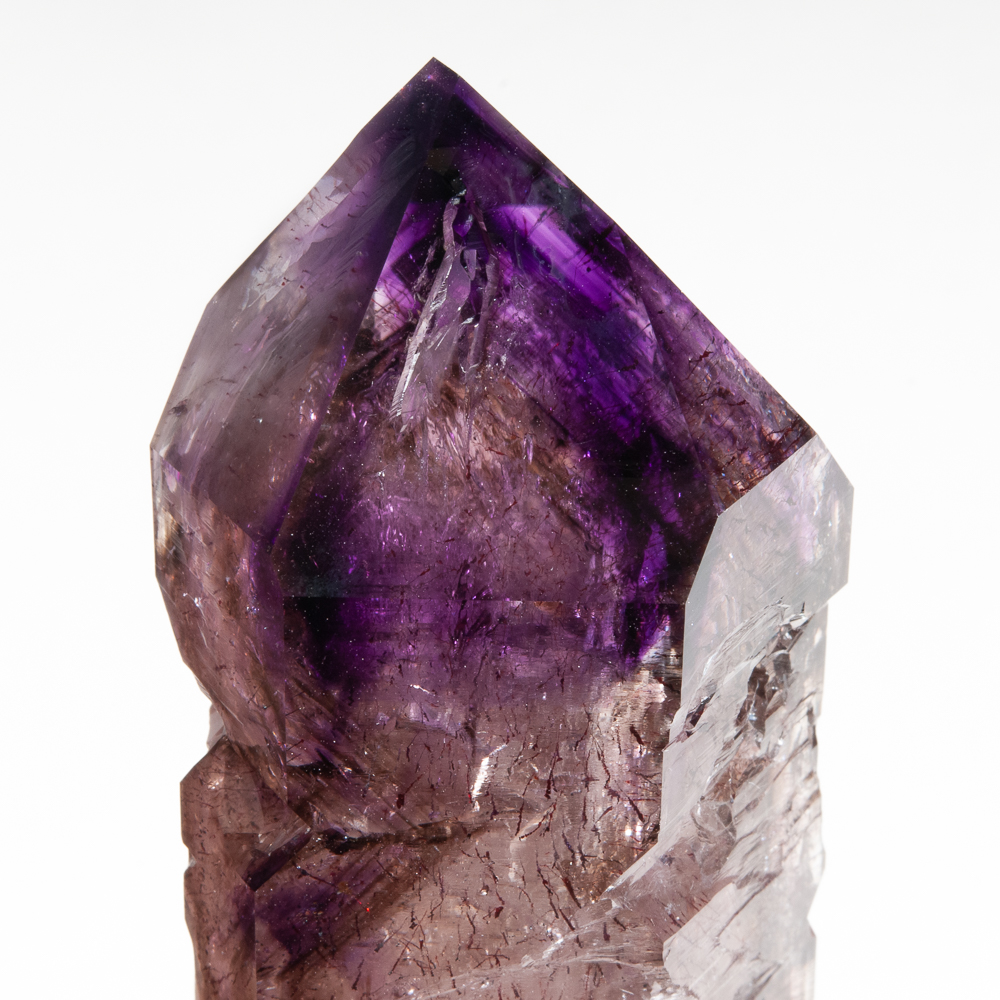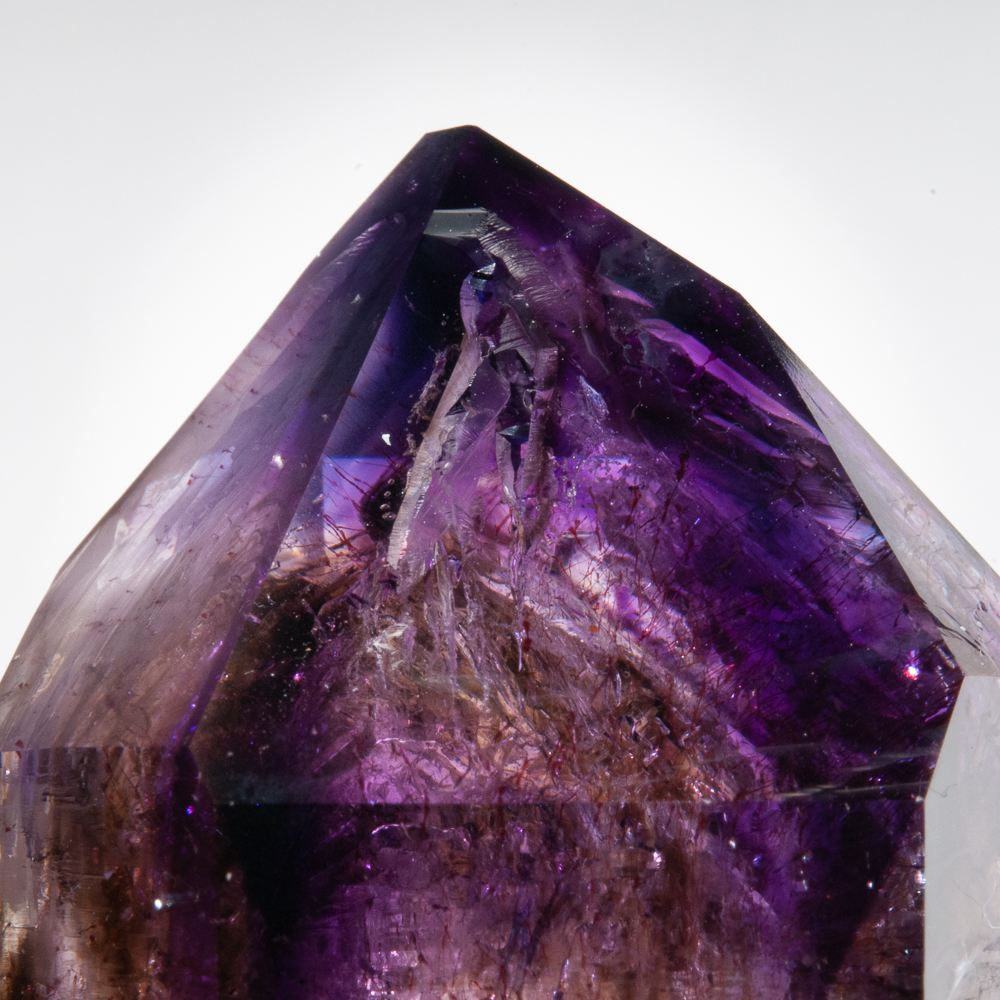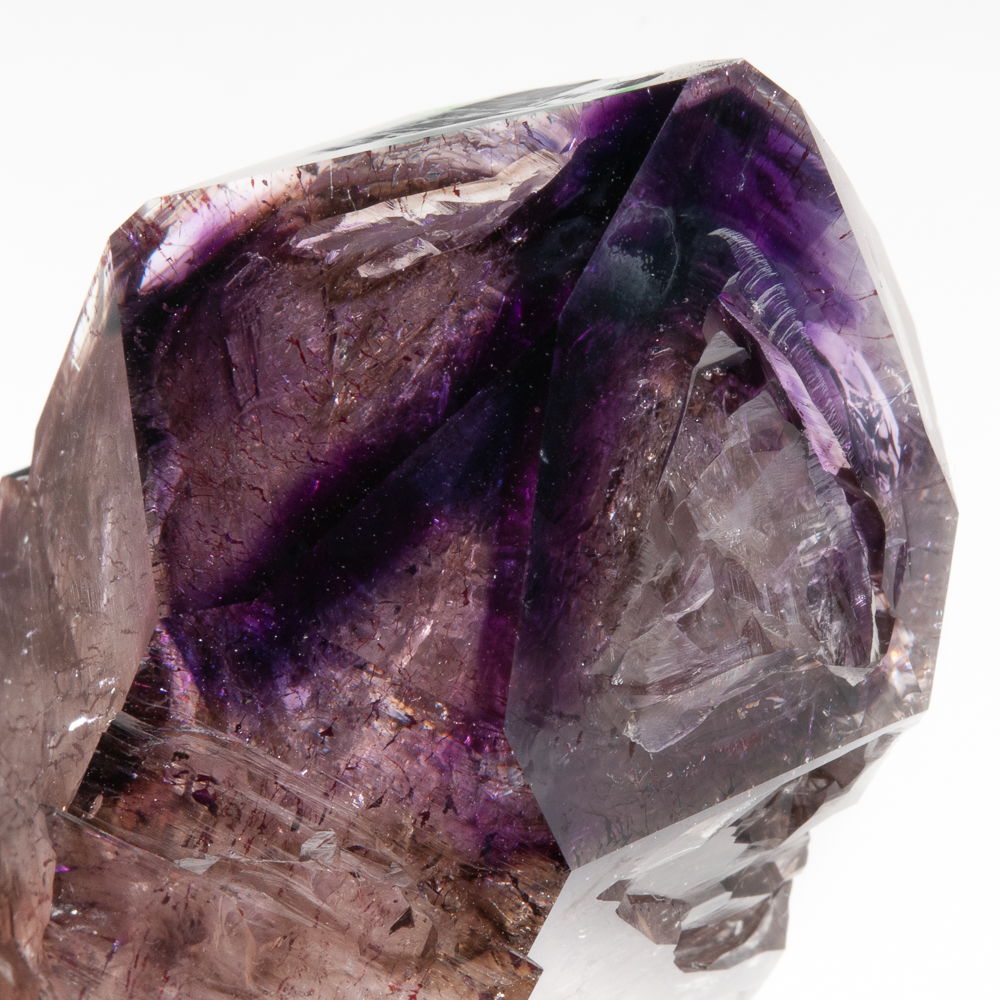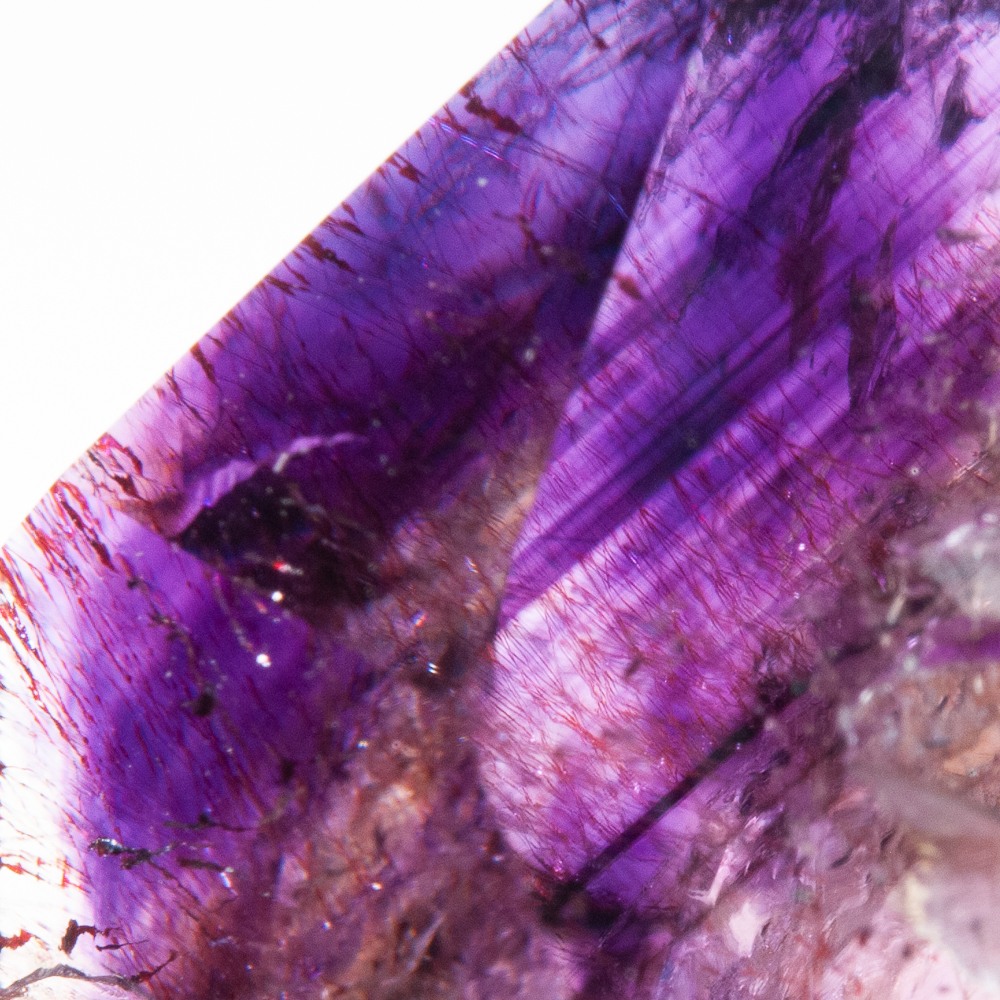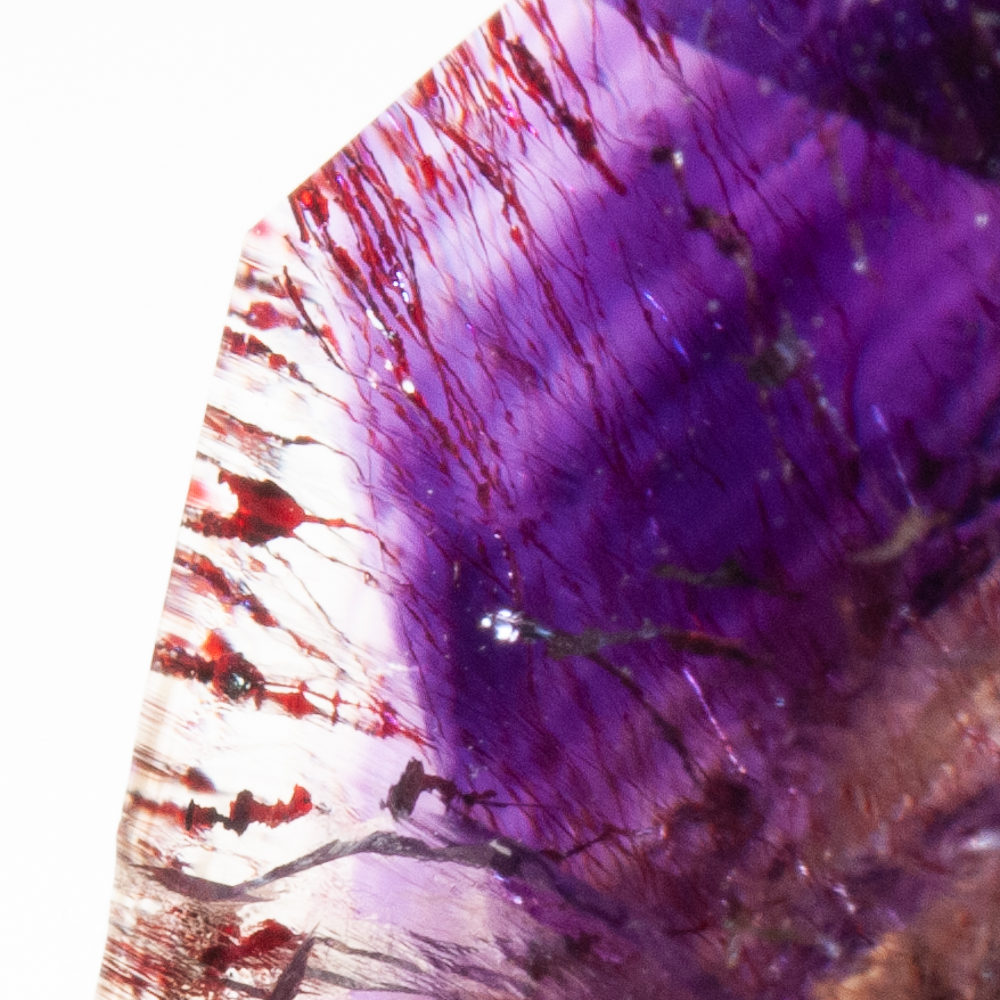Description
Detailed Description
This is one of the best, highest-quality cabinet-sized sceptres I’ve seen from the Chibuku Mine – it has intense deep purple zones along the edges of the pyramidal faces, and the rest of the sceptre head is a combination of smoky and amethystine quartz. It has super lustre, and three of the pyramidal faces have a very slightly different lustre (still very bright) and look, which I can best describe as similar to a faint version of what one sees with “rainbow garnets” – I believe there is perhaps a surface texture at work. I have not seen this on any other specimen form the Chibuku Mine and can’t call to mind another quartz on which I’ve seen this.
The crystal contains red and black hematite inclusions, and also a two-phase inclusion with a bubble that moves a short distance (visible in the left hand side of the second largest pyramidal crystal face).
I rarely use the word pristine when I describe a specimen, but this one is in pristine condition – which is not only remarkable for the locality, it’s amazing given the size of this crystal. This is a killer.
About the Chibuku Mine, Chiredzi, Masvingo, Zimbabwe
Amethyst and smoky quartz sceptres from Chiredzi have been known locally for at least two decades. Originally, the crystals were gathered by hand from surface showings by members of the people indigenous to the area, the Shangaan people. Specimen recovery efforts of this kind still take place in part of the locality, with only basic tools.
The first more involved workings at the property were developed in 2012. At the outset, the locality was one project, operated by partners. However, as seems to happen so often in such arrangements, difficulties arose. These led to the division of this locality into two separate side-by-side areas of operation. One operation is called the Shangani Mine, named after the Shangaan people. It has been worked by hand by Shangaan diggers. The other operation is named the Chibuku Mine. One of the principals running the mine has explained to me that the name refers back to the early times of local specimen recovery. At that time, the collecting work was done mostly by the women of the community, while men from the community were seen sitting about, drinking locally-brewed Chibuku beer (and not digging)… The mine name is therefore a laugh and also in that light can be seen as a tip of the cap to those hard-working early diggers whose efforts first brought these wonderful specimens out to the world. The Chibuku Mine operations are currently run by two principals, Sultan and Baba, as a professional specimen mining operation.
The Chibuku Mine was shut down during Covid and finally allowed to re-open in November 2022. Upon resumption, many local workers were hired to reopen the specimen mining operations. After a period of hand work, an excavator was brought in and mining now progresses at the Chibuku Mine with drilling and blasting to uncover pockets in the hard rock.
The Chibuku Mine and the Shangani Mine have produced substantial numbers of crystals over the years. Unfortunately, from the beginning of these crystal recovery efforts – and continuing even to the present day – most crystals have been moderately-to-badly damaged and are therefore not pieces I’d put on the website. However, the best from the 2022-2023 workings at the Chibuku Mine (represented by this lot) are better than most specimens from surface digging and hand recovery in the past – they are truly exceptional quality.

